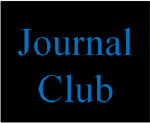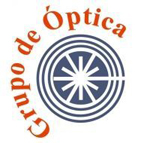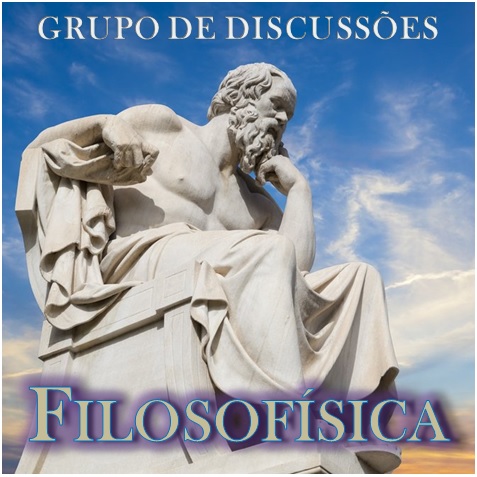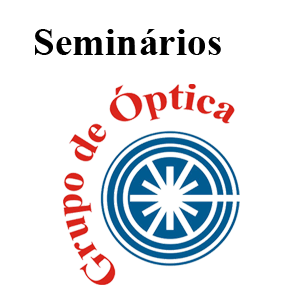AGUARDE A PROGRAMAÇÃO
ÂÂ
 The phenomenon of Anderson localization may occur in the presence of disorder in a variety of media. Disorder may in fact lead to distructive quantum interference of the multiple scattering paths of a particle or a wave, halting its diffusion in the media and localising the wave packet in a specific region.
The phenomenon of Anderson localization may occur in the presence of disorder in a variety of media. Disorder may in fact lead to distructive quantum interference of the multiple scattering paths of a particle or a wave, halting its diffusion in the media and localising the wave packet in a specific region.
Here we consider the effect of disorder on one-dimensional spin chains set up for ‘perfect state transfer’, where, due to a specific set of coupling between the spins, a quantum state can be transferred from one chain end to the other by simply letting the system evolve under the action of its natural Hamiltonian. This transfer dynamics has a well defined period.
These chains have been proposed as a powerful tool to transfer quantum information in solid state systems or to create and distribute entanglement. They could be embodied by very different physical systems, for example by linear chains of quantum dots with ground state excitons as pseudospins. In this case laser pulses could be used to inject the quantum state to be transferred across.
Our calculations show that a moderate amount of disorder could indeed induce Anderson localization in these one-dimensional systems. The level of localization depends on the chain length and on the injection site, becoming stronger for longer spin chains and for injection at the chain end [1].
These findings have practical implications for quantum devices based on spin chains, as disorder from e.g. fabrication defects might then lead to limiting the applicability of ‘perfect state transfer’ conditions.
[1]R. Ronke, M. Estarellas, I. D’Amico, T.P. Spiller, and T Miyadera, preprint
 Quantum spin liquids are interacting spin systems characterized by the absence of long-range magnetic order even at zero temperature. I will talk about an example of a spin liquid that is chiral (i.e. breaks parity and time reversal symmetry) and whose excitations are Majorana fermions coupled to a Z_2 gauge field. We show that the spectrum is gapless along lines in the three-dimensional Brillouin zone, and that these nodal lines are topological defects (vortices) of a non-Abelian Berry connection. This work is motivated by recent experiments in Mott-insulating double perovskites with strong spin-orbit coupling.
Quantum spin liquids are interacting spin systems characterized by the absence of long-range magnetic order even at zero temperature. I will talk about an example of a spin liquid that is chiral (i.e. breaks parity and time reversal symmetry) and whose excitations are Majorana fermions coupled to a Z_2 gauge field. We show that the spectrum is gapless along lines in the three-dimensional Brillouin zone, and that these nodal lines are topological defects (vortices) of a non-Abelian Berry connection. This work is motivated by recent experiments in Mott-insulating double perovskites with strong spin-orbit coupling.
 O câncer é responsável por cerca de 13% de todas as causas de morte no mundo. Mais de 7 milhões de pessoas morrem anualmente da doença. Na maioria dos casos, as taxas de sobrevivência são maiores quando diagnosticado em fases iniciais. Sabe-se que as lesões tumorais apresentam uma temperatura diferente se comparado a tecidos normais. Neste estudo, foram injetadas subcutaneamente células de tumor de Ehrlich no dorso de nove camundongos Swiss. O crescimento do tumor foi acompanhado, através de imagens de infravermelho, a cada dois dias até que a lesão chegasse a um tamanho de 1cm de diâmetro, afim de monitorar a mudança de temperatura da região durante o crescimento do tumor. Além disso, em parceria com o Departamento de Pele da Fundação Hospital Amaral Carvalho estamos investigando o uso da termografia para discriminação de lesões cutâneas (carcinoma basocelular, carcinoma espinocelular, queratose actínica, queratose seborréica pigmentada, melanoma e nevo intradérmico). Ainda é necessária à elaboração de novo Software para melhor processamento destas imagens. Entretanto, das imagens obtidas até o momento, temos maior facilidade em discriminar o carcinoma espinocelular das demais lesões, o que torna este resultado bastante interessante já que existe uma grande dificuldade de diagnóstico desta lesão pela dermatoscopia. Até o momento foi monitorado o tratamento por Terapia Fotodinâmica em 40 lesões de carcinoma basocelular a fim de poder prever o resultado da terapia.
O câncer é responsável por cerca de 13% de todas as causas de morte no mundo. Mais de 7 milhões de pessoas morrem anualmente da doença. Na maioria dos casos, as taxas de sobrevivência são maiores quando diagnosticado em fases iniciais. Sabe-se que as lesões tumorais apresentam uma temperatura diferente se comparado a tecidos normais. Neste estudo, foram injetadas subcutaneamente células de tumor de Ehrlich no dorso de nove camundongos Swiss. O crescimento do tumor foi acompanhado, através de imagens de infravermelho, a cada dois dias até que a lesão chegasse a um tamanho de 1cm de diâmetro, afim de monitorar a mudança de temperatura da região durante o crescimento do tumor. Além disso, em parceria com o Departamento de Pele da Fundação Hospital Amaral Carvalho estamos investigando o uso da termografia para discriminação de lesões cutâneas (carcinoma basocelular, carcinoma espinocelular, queratose actínica, queratose seborréica pigmentada, melanoma e nevo intradérmico). Ainda é necessária à elaboração de novo Software para melhor processamento destas imagens. Entretanto, das imagens obtidas até o momento, temos maior facilidade em discriminar o carcinoma espinocelular das demais lesões, o que torna este resultado bastante interessante já que existe uma grande dificuldade de diagnóstico desta lesão pela dermatoscopia. Até o momento foi monitorado o tratamento por Terapia Fotodinâmica em 40 lesões de carcinoma basocelular a fim de poder prever o resultado da terapia.
 Desde a criação da física quântica, em 1927, os físicos têm convivido com uma controvérsia continuada sobre os fundamentos desta teoria científica. Parte desta controvérsia está relacionada à existência de diferentes interpretações físicas para o mesmo formalismo matemático. Interpretações diferentes mas, até agora, levando às mesmas predições experimentais. Nós queremos discutir o que a história e a filosofia da ciência podem nos dizer sobre este caso emblemático na ciência contemporânea. Argumentaremos que, no sentido oposto, este caso traz questões novas e interessantes não só para a ciência mas também para a história e a filosofia da ciência.
Desde a criação da física quântica, em 1927, os físicos têm convivido com uma controvérsia continuada sobre os fundamentos desta teoria científica. Parte desta controvérsia está relacionada à existência de diferentes interpretações físicas para o mesmo formalismo matemático. Interpretações diferentes mas, até agora, levando às mesmas predições experimentais. Nós queremos discutir o que a história e a filosofia da ciência podem nos dizer sobre este caso emblemático na ciência contemporânea. Argumentaremos que, no sentido oposto, este caso traz questões novas e interessantes não só para a ciência mas também para a história e a filosofia da ciência.
We explore theoretically the formation of bound states in the continuum (BICs) in graphene hosting two collinear adatoms situated on different sides of the  sheet and at the center of the hexagonal cell, where a phantom atom of a fictitious lattice emulates the six carbons of the cell. We verify that in this configuration the local density of states near the Dirac points exhibits two characteristic features: (i) a cubic dependence on energy instead of a linear one for graphene as found in New J. Phys. 16, 013045 (2014), and (ii) the formation of BICs as the aftermath of a destructive Fano interference assisted by the Coulomb correlations in the adatoms. For the geometry in which adatoms are collinear to carbon atoms, we report an absence of BICs.
sheet and at the center of the hexagonal cell, where a phantom atom of a fictitious lattice emulates the six carbons of the cell. We verify that in this configuration the local density of states near the Dirac points exhibits two characteristic features: (i) a cubic dependence on energy instead of a linear one for graphene as found in New J. Phys. 16, 013045 (2014), and (ii) the formation of BICs as the aftermath of a destructive Fano interference assisted by the Coulomb correlations in the adatoms. For the geometry in which adatoms are collinear to carbon atoms, we report an absence of BICs.
 In non polarized fermionic systems, superfluidity is described by BCS theory and external magnetic fields as well as polarization induced by spin-imbalanced populations are expected to destroy the BCS-pairing mechanism, forcing the system into a polarized normal phase. It is expected, however, that for a regime of small polarizations the superfluidity still survives against the normal regime, the so-called Fulde-Ferrell-Larkin-Ovchinnikov (FFLO) state. This exotic coexistence of superfluidity and magnetism is one of the several interesting phenomena which have been investigated theoretical and experimentally since decades. From the experimental point of view, despite the fact that state-of-the-art experiments with cold atoms and with organic superconductors have been addressed this matter, there have been no unequivocal observations of FFLO superconductivity up to now. From the theoretical point of view, thanks to powerful tools for describing complex many-body systems (Monte Carlo, DMFT, DMRG, DFT, etc), several features of the FFLO state have been revealed. In contrast though, little is known about the nature of the transition from the FFLO-state to the normal phase and the critical point at which the transition occurs is also on debate. In this talk I will present the basic concepts behind the FFLO superfluidity and discuss preliminary theoretical results where metric spaces are used as a probe for the FFLO to the normal phase transition.
In non polarized fermionic systems, superfluidity is described by BCS theory and external magnetic fields as well as polarization induced by spin-imbalanced populations are expected to destroy the BCS-pairing mechanism, forcing the system into a polarized normal phase. It is expected, however, that for a regime of small polarizations the superfluidity still survives against the normal regime, the so-called Fulde-Ferrell-Larkin-Ovchinnikov (FFLO) state. This exotic coexistence of superfluidity and magnetism is one of the several interesting phenomena which have been investigated theoretical and experimentally since decades. From the experimental point of view, despite the fact that state-of-the-art experiments with cold atoms and with organic superconductors have been addressed this matter, there have been no unequivocal observations of FFLO superconductivity up to now. From the theoretical point of view, thanks to powerful tools for describing complex many-body systems (Monte Carlo, DMFT, DMRG, DFT, etc), several features of the FFLO state have been revealed. In contrast though, little is known about the nature of the transition from the FFLO-state to the normal phase and the critical point at which the transition occurs is also on debate. In this talk I will present the basic concepts behind the FFLO superfluidity and discuss preliminary theoretical results where metric spaces are used as a probe for the FFLO to the normal phase transition.
 The fastest possible collective response of a quantum many-body system is related to its excitations at the highest possible energy. In condensed-matter systems, the corresponding timescale is typically set by the Fermi energy. Taking advantage of fast and precise control of interactions between ultracold atoms, we report on the observation of ultrafast dynamics of impurities coupled to an atomic Fermi sea. Our interferometric measurements track the non-perturbative quantum evolution of a fermionic many-body system, revealing in real time the formation dynamics of quasiparticles and the quantum interference between attractive and repulsive states throughout the full depth of the Fermi sea. Ultrafast time-domain methods to manipulate and investigate strongly interacting quantum gases open up new windows on the dynamics of quantum matter under extreme non-equilibrium conditions.
The fastest possible collective response of a quantum many-body system is related to its excitations at the highest possible energy. In condensed-matter systems, the corresponding timescale is typically set by the Fermi energy. Taking advantage of fast and precise control of interactions between ultracold atoms, we report on the observation of ultrafast dynamics of impurities coupled to an atomic Fermi sea. Our interferometric measurements track the non-perturbative quantum evolution of a fermionic many-body system, revealing in real time the formation dynamics of quasiparticles and the quantum interference between attractive and repulsive states throughout the full depth of the Fermi sea. Ultrafast time-domain methods to manipulate and investigate strongly interacting quantum gases open up new windows on the dynamics of quantum matter under extreme non-equilibrium conditions.
For more information: science.sciencemag.org/content/354/6308/96.full